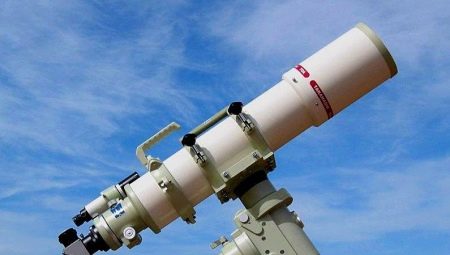How is a reflector different from a refractor?

Telescopes, depending on the device, are fundamentally of two types - reflectors and refractors. The article will talk about what it is, what are the differences between these two systems, and what is better to choose for observations for an amateur astronomer.

Comparison of main characteristics
The main difference between these two traditional types of telescopes is the difference in optical systems. So, a lens consisting of lenses is referred to as refractors. This system was used by Galileo in 1609. In turn, refractors can be of two types - according to the Galileo and Kepler systems.


If the telescope lens is equipped not with lenses, but with mirrors, this model is a reflector. The first optical telescope with a focusing mirror was created by Newton almost half a century after Galileo invented his system, that is, in 1668. The device got its name from the word "reflection", that is, "reflection of light". In this case, mirrors can have a very different surface shape: spherical, ellipse, parabola, hyperbola, oblate spheroid, and so on. The reflex systems themselves are much more numerous than refractors. For example, these are the systems of Newton, Herschel, Cassegrain, Gregory and others.
But there are also telescopes that have both mirrors and lenses in their lenses. These systems are called catadioptric systems. There are also quite a few such systems, for example, the Maksutov and Klevtsov systems.


To understand how the first two systems differ, it is worth comparing their characteristics.
The telescope-refractor structurally consists of 2 lenses, and they refract light beams: the large one is in the objective, the small one is in the eyepiece.
It is more difficult to make a refractor telescope - processing a high-quality special lens is difficult, especially if it is large. Concave mirrors are much easier to manufacture. This explains the fact that refractors are always more expensive.


The main differences between refractors:
- they are more reliable, their service life is longer;
- the image quality is not affected by the environment;
- you can also observe terrestrial objects with the help of a refractor, however, this requires additional equipment;
- they are much larger;
- not suitable for studying, for example, nebulae or other not very bright celestial bodies.

As for the reflector telescope, it is equipped with a mirror. Its fundamental difference from a refractor is that it does not have a whole pipe.
Reflector telescopes usually have higher clarity and less distortion.... Faint celestial bodies can be observed.
Light weight and length, convenient to use. Low cost, especially when compared to refractors.
But there are also disadvantages:
- inability to study ground objects;
- it takes some time for thermal stabilization;
- the need to clean the optics;
- there are some distortions.


What is the best choice?
What to choose - a reflector telescope or a refractor telescope, will depend on where and how you plan to use it.... So, with the help of models with lenses, it is better to study the Moon, observe the planets. Refractors are ideal for exploring the starry sky to see objects known for the first time. They are also suitable for those who have never had a telescope. The refractor telescope is easy to use and does not require any special maintenance. At the same time, many interesting things can be seen through this optics. This is a good and undemanding device, a great gift for curious children.
A refractor will be useful for those who love travel. Even seasoned amateur astronomers keep the refractor as a travel instrument. With its help, during a trip, you can see, for example, comets, eclipses. This optical device is suitable for those who from large cities can go to where they can better observe the starry sky.
The reflector is optimal for the most detailed study, as well as for performing astrophotography, this is a powerful high-aperture optics... Of course, seasoned amateur astronomers have both types of instruments that they use in different situations.










